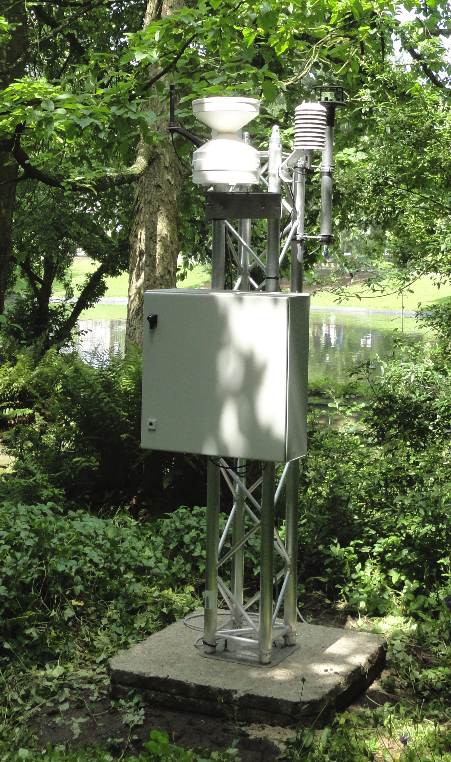Accurate sensors are needed to obtain reliable data. In what follows we explain how the sensors work.
To obtain good temperature observations it is important to measure the temperature of the air. Therefore one should prevent
direct sunlight to reach the sensor and avoid that air close to the sensor is standing still. To satisfy these conditions temperature measurements
are done in ventilated radiation screens (see
1 and
3).
The openings in radiation screen
1 guarantee a natural ventilation whereas radiation shield
3 uses a fan to blow air through the shield. Under most circumstances both approaches
result in very similar observations. But on clear, calm days there can be significant differences.
The air temperature is measured twice (in
1 and
3) with a so-called
Pt100 sensor. Such a sensor makes use of a simple electrical circuit. The Pt100 sensor contains a platinum resistance whose resistance value
depends on temperature. If a voltage is applied over the resistance the current will thus depend on the temperature
(Ohm's law). The current is then measured accurately by the datalogger and used to deduce the air temperature.
Relative humidity is only measured in
1 and the measurement is based on a principle similar
to the one of the Pt100 sensor.
The funnel
2 guides the precipitation to the
tipping-bucket rain gauge.
The principle is simple:
- Precipitation is collected in the funnel and runs through a filter into a small bucket.
- When the bucket is filled, it tips and is emptied. The funnel now guides the precipitation into a
second bucket.
- Full, the second bucket will tip in its turn. It is now again the first bucket that will be filled...
Each tipping of a bucket is registered by the datalogger and in this way the amount of precipitation is calculated.
Sensor
4 measures the wind speed and direction. This sensor consists of 4 small antennas that
emit and receive ultrasonic waves. The velocity of the ultrasonic waves depends on the wind, e.g. a wave having tailwind
will propagate faster than one with headwind. By measuring the travel times of ultrasonic waves, the wind speed and direction
is determined.


